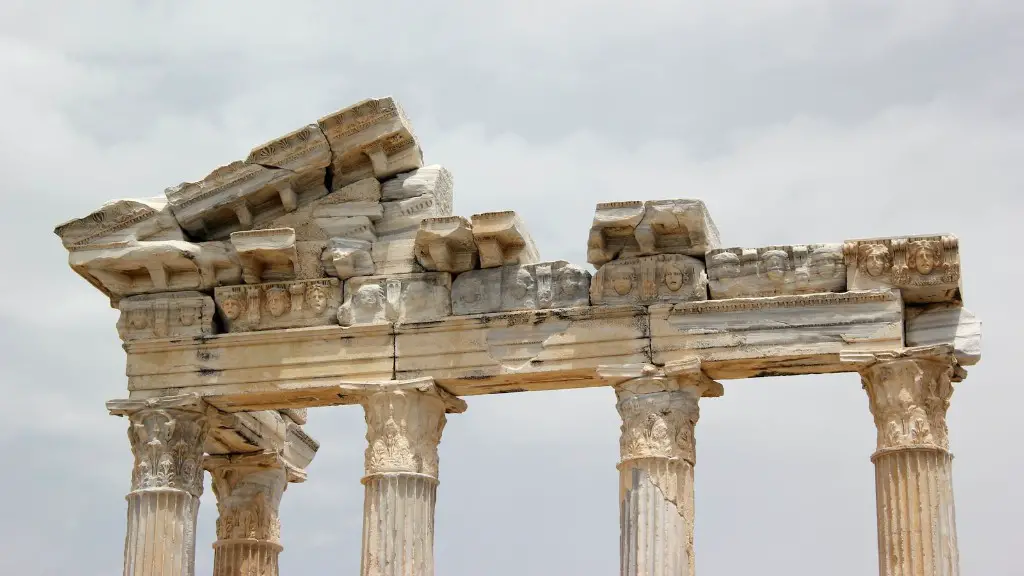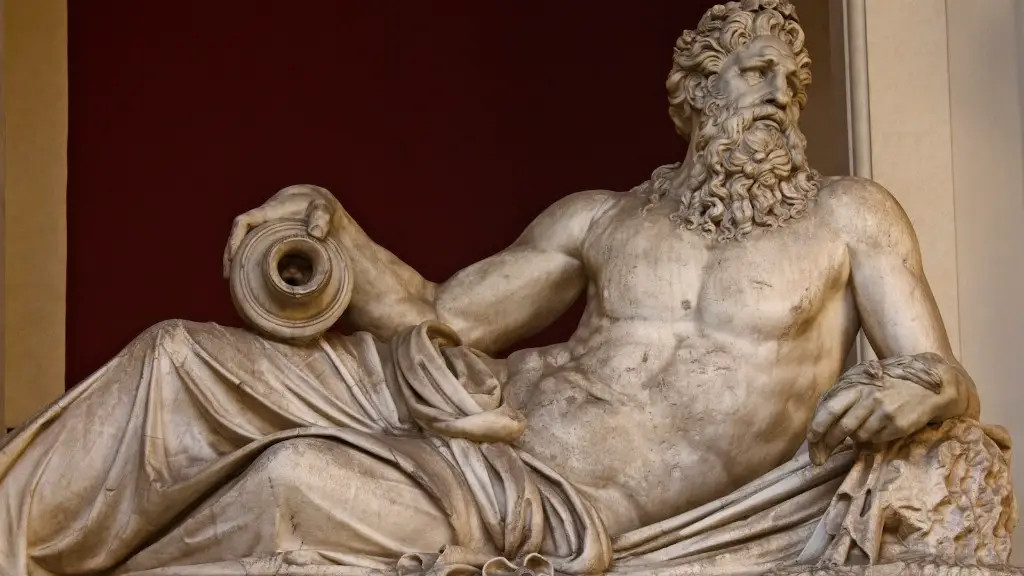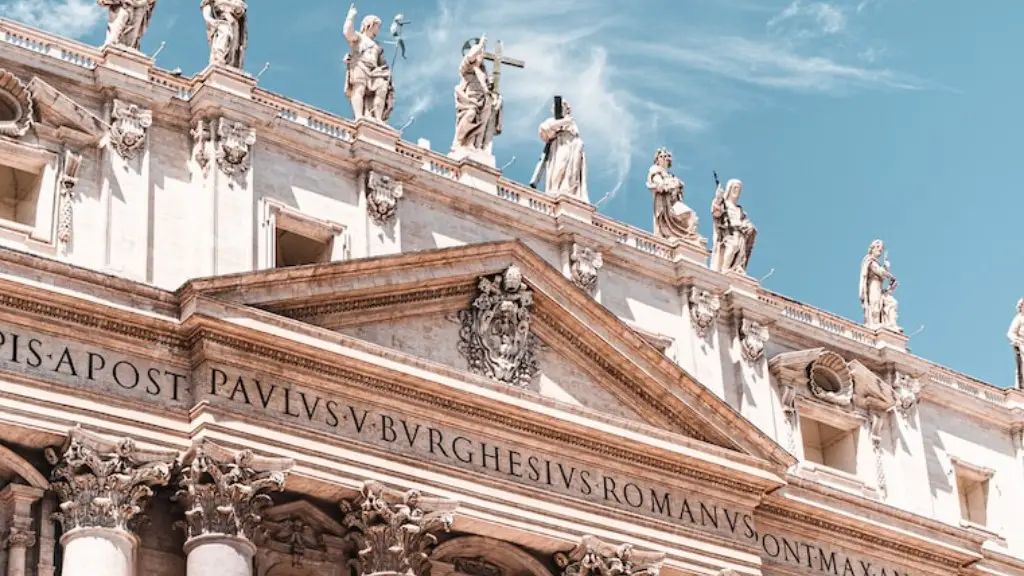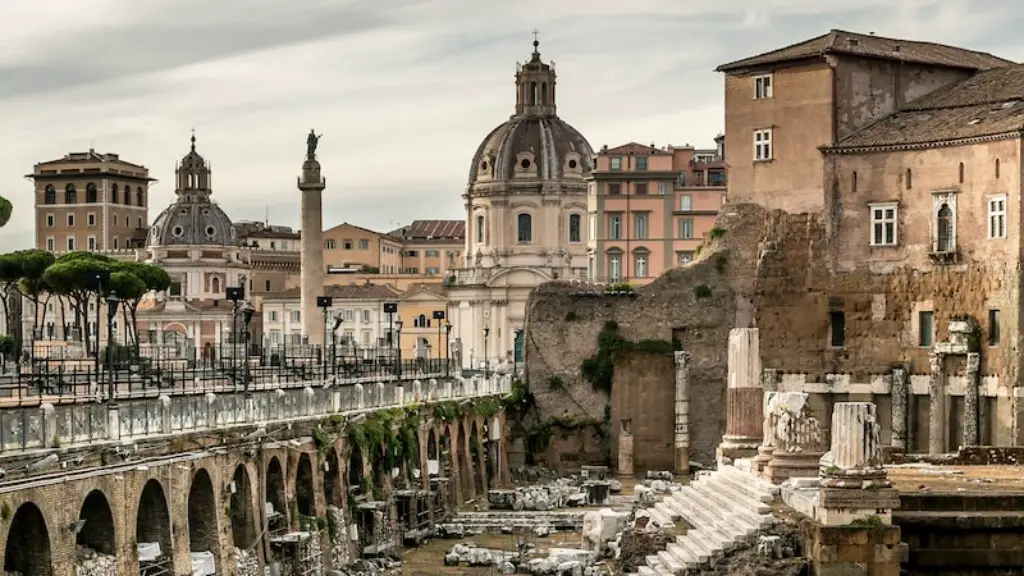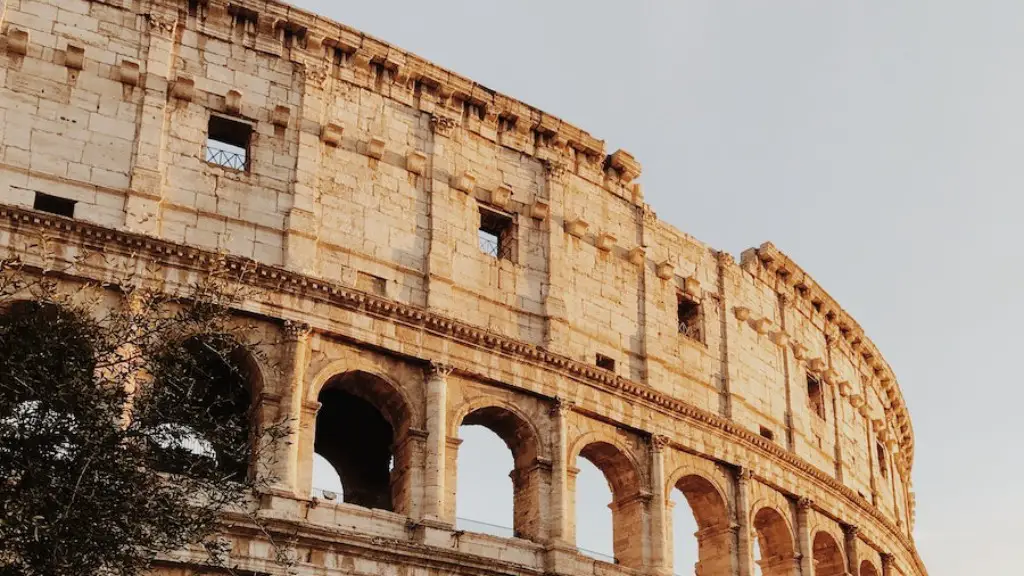The city of Rome is known for a lot of things- from its rich culture and heritage to its opulent lifestyle. But what made Rome an important center of life in the ancient world? To comprehend the importance of Rome during the ancient era, one must look at the factors that make it significant. From its powerful political system to its expansive acceptance of different cultures, Rome was a place that truly had something for everyone.
The political system of ancient Rome was one of the main factors behind its success. At the center of it all, was the emperor. This figure was supported by the Senate, which was made up of the most important citizens of Rome. This strong political system allowed the people of Rome to maintain control of the city-state and effectively keep out intruders. It was only through this structure that Rome was able to forge an empire that spanned the entirety of the Mediterranean.
Rome was also the center of many different religions, including Christianity. The mere spread of the Christian faith was an important factor in Rome’s success. It was only through the acceptance of Christianity that the people of Rome could find common ground and develop unity within the city-state. The acceptance of different religions also made Rome an important center of learning and education, with people from all over the world looking to the city to expand their knowledge and understanding of different cultures and beliefs.
Ancient Rome was also an important commercial center. This was thanks to its convenient location and its connections to other parts of the Mediterranean world. With its control of many trade routes, Rome was the ideal place for merchants and traders to conduct business. This commercial activity was integral to the success of the Roman Empire, as it was how it had the resources it needed to sustain itself.
Achieving such greatness was far from easy and Rome was bolstered by its strong military. The legionnaires of the Roman army were known to be fiercely loyal to the city-state and its people. They were well-trained and disciplined, and served as a powerful reminder that Rome was not to be trifled with. With their help, Rome was able to expand its influence and maintain its control over its many provinces.
But beyond its political and military strength, Rome was also an important cultural hub. From great theatres and works of art, to powerful gladiators, the city of Rome was a place that had something for everyone. It was only through the acceptance of these various forms of entertainment and expression that the people of Rome could truly appreciate each other’s culture and beliefs. The city was full of life, and it was these diverse perspectives that truly set Rome apart from the rest.
Geographical Influence
Being situated in the heart of the Mediterranean, Rome was at the focal location of this important area. Acting as a connecting route between Europe, North Africa, and Asia, the city had access to a wide range of commodities not available elsewhere. Because of this, it had a flourishing trade market which brought in additional wealth and prosperity.
This geographical location also contributed to the increase of Rome’s overall size during its remaining centuries. Having an ideal location in the Mediterranean that connected to other parts of the world made it easier for invaders to take over parts of the Empire and for Rome to expand by conquering other territories.
The geographical region was no stranger to earthquakes, floods, and other natural disasters. This meant that the city was always prepared to have enough resources to help rebuild after a disaster occurred. This in turn made the people of Rome more resilient to any negative outcomes of natural disasters than others in the region.
The presence of the Mediterranean Sea allowed Rome to build a strong naval power. This meant that they could control the flow of trade within the region and conquer distant lands with ease. The individual provinces that were part of the Empire could be connected by sea and be defended much easier due to the presence of a naval power.
The Architecture
Ancient Rome was renowned for its impressive architecture and it was an influential factor in the culture and lifestyle of the citizens. The city was dotted with towering structures like the Colosseum and the Pantheon that demonstrated prestigious engineering capabilities of the ancient Romans. These structures were huge marvels of engineering and provided a great place for citizens to come together for activities and events.
Rome was also home to a considerable number of engineering feats, from aqueducts to public buildings and fountains. These feats made city life more comfortable, as more people had access to clean water, and other basic amenities. This was an important factor behind the city’s success, as it made it easier for the people of Rome to maintain an impressive standard of living despite the various disasters that occurred.
The intricate urban designs and pathways of Rome managed to maintain a balance between beauty and functionality. The combination of grand buildings and streets made it easy for the citizens to move throughout the city without getting lost. This system of engineering, planning, and construction was meant to show the world that Rome was a powerful and advanced civilization.
Religious Beliefs
Religion played a large role in ancient Rome, and it was a key factor in bringing citizens together. The city had a number of temples dedicated to various gods and spirits, each of which had their own rituals and beliefs. This played an important role in the solidarity of the Roman people, as it provided them with a common source of identity and pride.
The pantheon of gods in Rome was immense and worship of various gods was an integral element of the culture. All citizens had access to religious participation and all gods were honored in some way. This allowed a theological system to develop in which the gods were respected, and enabled the citizens of Rome to cultivate a strong sense of faith.
Rome also had its own version of Christianity, which was known as the Roman Catholic Church. This allowed the city to expand its influence in the Mediterranean and provided the citizens with an additional source of togetherness. Not only did the Christians of Rome uphold their faith, but also helped spread Christian messages which heightened the popularity of Christianity in general.
Thanks to the multitude of beliefs and religious structures, Rome was able to bring in more faithful believers, and these faithful followers helped strengthen the city’s culture and traditions. This further solidified Rome’s presence in the Mediterranean world and the city-state was able to survive the numerous tribulations and hardships.
Social Practices and Traditions
In addition to its strong political, military, commercial, and religious practices, Rome was also known for its impressive social life. It was known for its thriving forums, exotic markets, and monuments, which drew countless visitors from all over the Mediterranean. It was within these walls that the citizens of Rome could let loose and take part in social practices that unified their culture and beliefs.
The culture of Rome was heavily influenced by its customs, traditions, and festivals. These events often lasted days and were integral to the lifestyle of citizens. Take for example the Lupercale, an important celebration dedicated to the mythical she-wolf who cared for the mythical founders of Rome. This made the city a destination for tourists and dignitaries, eager to be part of the city’s culture.
It was common for the citizens of Rome to gather in the streets for informal gatherings. Music and storytelling were integral parts of these gatherings, as they provided entertainment and comfort. This made Rome an important cultural center in the ancient world and it was these practices that truly made the city the heart of the Empire.
The love of sport was something that the people of Rome shared, with the most popular being chariot racing. This was a form of entertainment that showcased individual skill and speed while being highly entertaining to the crowds. People from all over the empire flocked to Rome to see these events, which only served to show the importance of the city of Rome to the rest of the world.
Legacy
Rome was one of the most influential cities of the ancient world and its legacy continues to this day. Its expansive cultural and commercial activities played a huge role in shaping the region, and it was only through its strong political system and a unified people that the city accomplished what it did. This unity was brought about by the acceptance of different cultures and beliefs, which gave Rome a rich and diverse way of life that few cultures could match.
The city of Rome also left its mark in the realm of engineering and architecture. Its remaining structures still stand today and are marvels of engineering that still inspires many today. Its intricate pathways and urban planning have also become essential elements of modern city life and have become hallmarks of the cities of the world.
The legacy of Rome continues to resonate in the modern world, as the city is a source of inspiration for many. From its impressive military might to its cultural celebrations, Rome truly was a city like no other. It was this thriving center of life that enabled Rome to become the epicenter of the Mediterranean and a powerful force that changed the course of human history.
